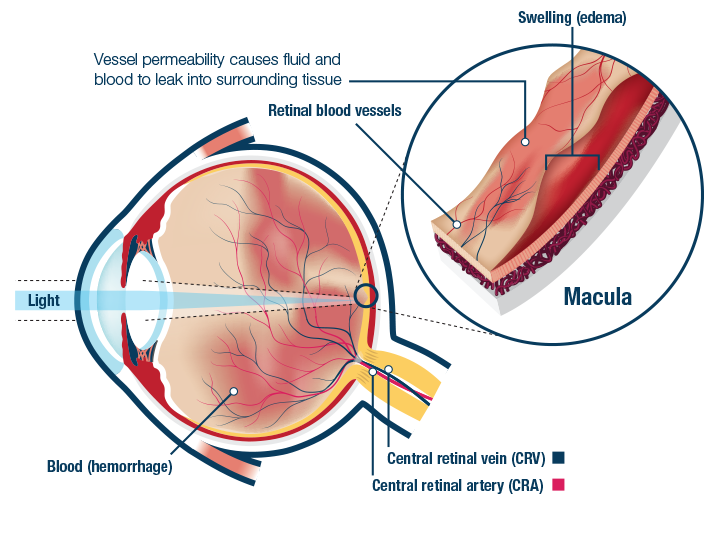You may have heard the old saying, “Our eyes are a window into our soul”, but in reality, our eyes are a window into our health. Did you know that during an annual eye exam, your physician could discover that you may have hypertension, high cholesterol, Thyroid Disease or even Autoimmune Disorders? Diabetes is another disease commonly detected during an eye exam. Your physician may notice leaking blood vessels or a yellowish fluid at the back of the eye, leading them to further explore Diabetic Eye Diseases.
Diabetic Retinopathy and Diabetic Macular Edema (DME) are just two of the common diseases included within the group of conditions that make up Diabetic Eye Diseases.
Diabetic Retinopathy

(Photo Source: Stanton Optical)
The retina is located at the back of the eye and is made up of highly light – sensitive and delicate tissue. Diabetic Retinopathy occurs when the blood vessels within this tissue are damaged, and leak fluid or blood causing surrounding tissue to swell. This swelling may result in blurry vision and can lead to blindness if left untreated. Diabetic Retinopathy happens to be the leading cause of vision loss amongst Diabetic Patients, often slowly stealing away their sight. Some patients don’t experience any symptoms until it’s progressed, but some things to look out for are distorted vision, spots or dark strings floating through your vision (floaters), empty areas within your line of sight and vision loss.
Diabetic Macular Edema

(Photo Source: www.noweyeknow.com)
Patients who have developed Diabetic Retinopathy are also at risk of developing Diabetic Macular Edema. This occurs when there is abnormal leakage and accumulation of fluid within the macula, an area of the retina responsible for sharp, straight-ahead vision. Patients affected may notice double vision, eye floaters, faded colors and often times blurred or wavy vision near the center of their vision.
There are treatment options available for Diabetic Eye Diseases, with the goal of both maintaining vision and preventing further vision loss. First and foremost, it’s important to get your blood sugar levels under control. Although laser therapy is available to treat the damage within the retina, intra-vitreal injections are commonly used for treatment. Eye drops, pills and even surgical procedures are treatment options as well, but your physician will discuss what avenue makes most sense for you.
The important take-away here is that regular eye exams are incredibly important, even more so for diabetic patients. The American Optometric Association recommends all diabetic patients undergo a comprehensive dilated eye exam at least once a year, as this simple exam could save you from a lifetime of vision loss.
Sources: Mayo Clinic, AOA, National Eye Institute









